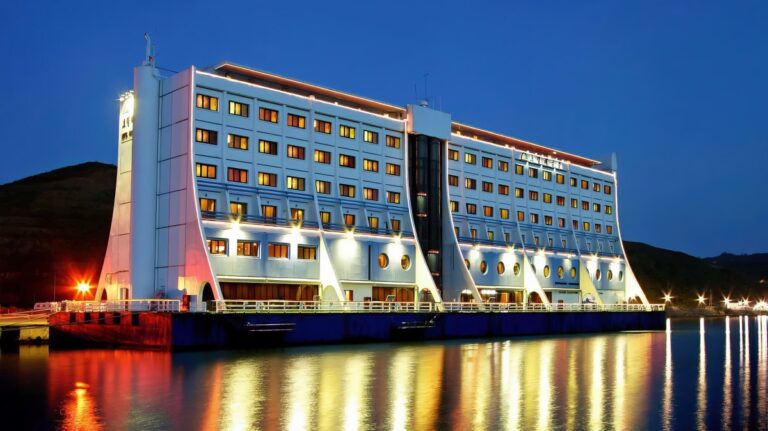Once a prestigious five-star resort gracefully floating over Australia’s Great Barrier Reef, the Hotel Haegumgang now rests in a state of disrepair within a North Korean port, a brief 20-minute drive from the Demilitarized Zone, the tightly controlled region dividing the two Koreas.
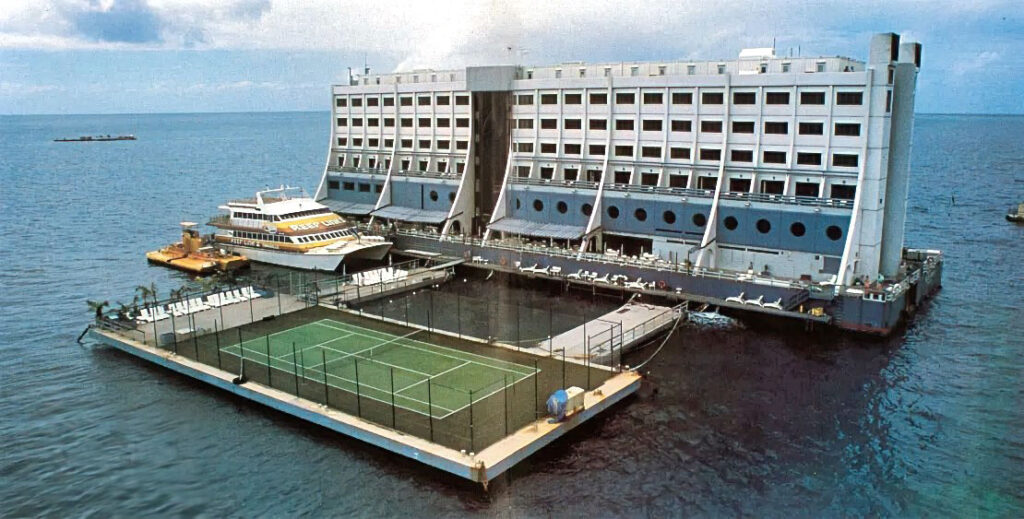
In a perplexing journey spanning over 30 years and covering more than 10,000 miles, the world’s inaugural floating hotel concluded its odyssey in a tragic twist, leading to its current fate on the brink of demolition.
As per intelligence reports from South Korea, the North Korean government purportedly razed the floating Hotel Haegumgang in 2022, joining the fate of the Onjonggak Rest House, known for hosting televised reunions of separated relatives from both sides of the DMZ.
Delving into the significance of Mount Kumgang and the potential demise of the floating hotel sheds light on its captivating history.
A Night at the Reef
Conceived by Doug Tarca, an Italian-born professional diver and entrepreneur residing in Townsville, Australia, the floating hotel was envisioned as a lavish haven for divers. Tarca’s profound admiration for the Great Barrier Reef led to the establishment of Reef Link in 1983, initially providing catamaran trips for day-trippers.
However, Tarca’s visionary idea evolved into a custom floating hotel, constructed in 1986 at Singapore’s Bethlehem shipyard. The horseshoe-shaped John Brewer Reef within the Great Barrier Reef Marine Park became its anchoring site, boasting tranquility ideal for a floating hotel.
Christened the Four Seasons Barrier Reef Resort, the $45 million (equivalent to over $100 million today) hotel debuted on March 9, 1988, offering 176 rooms, two restaurants, a nightclub, a research lab, and recreational facilities. Despite its allure, challenges such as inclement weather and operational expenses led to its closure after just a year, eventually being sold to a company in Ho Chi Minh City.
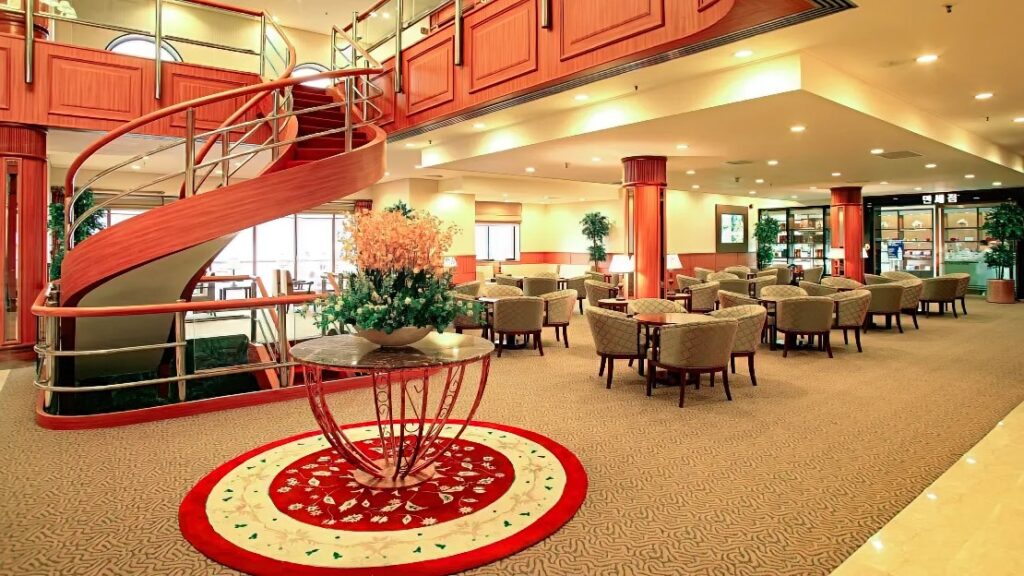
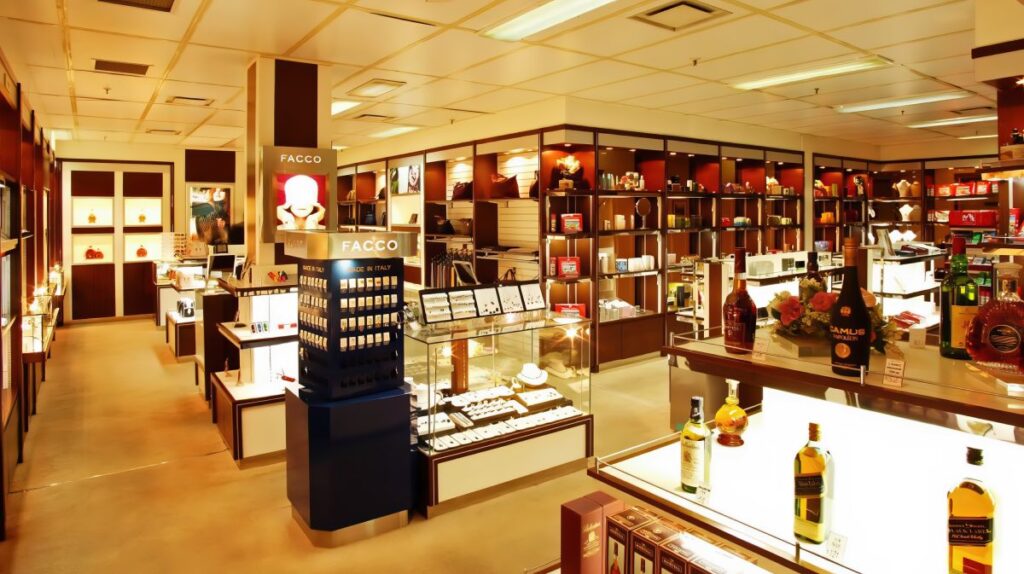
An Unlikely Odyssey
Renamed the Saigon Hotel or colloquially known as “The Floater,” the hotel thrived in Saigon River until financial woes forced closure in 1998. Rather than dismantling, it found an unexpected new chapter by being purchased by North Korea in a bid to attract tourists to Mount Kumgang, fostering inter-Korean ties.
Under the moniker Hotel Haegumgang, it reopened in October 2000, managed by South Korean company Hyundai Asan. Over the years, Mount Kumgang drew over 2 million tourists, fostering inter-Korean reconciliation.

A Tragic Turn
The hotel faced a tragic incident in 2008 when a North Korean soldier killed a South Korean woman near the Mount Kumgang tourist area. Hyundai Asan suspended tours, and Hotel Haegumgang shut down. Speculation surrounds its operations since then, with suggestions that access was restricted to North Korea’s political elite.
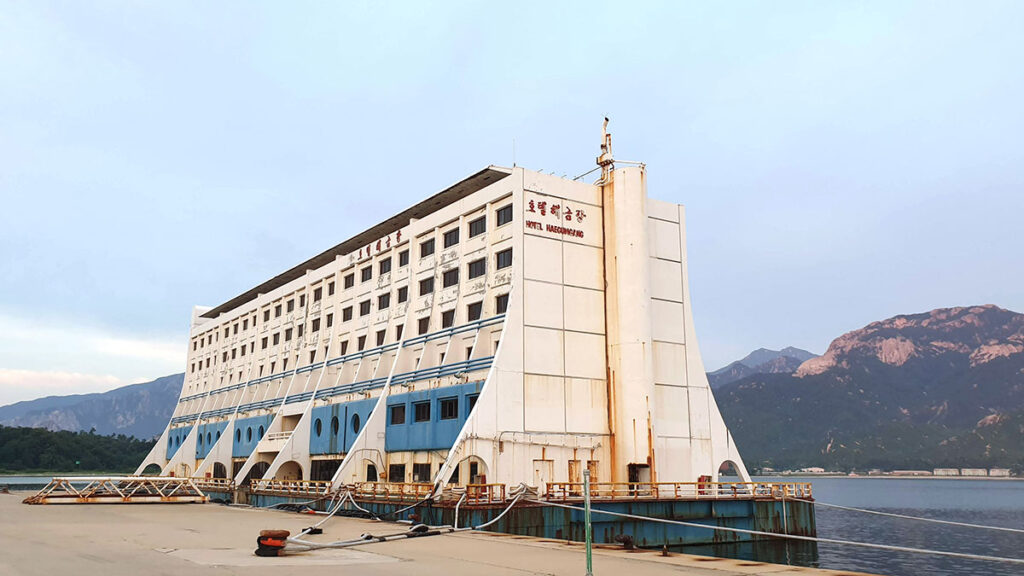
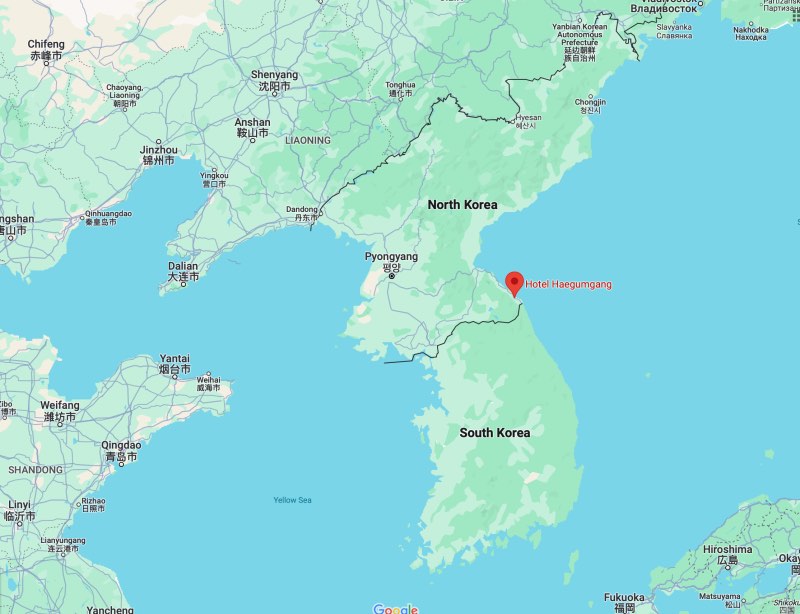
In 2019, North Korean leader Kim Jong-Un criticized the area’s facilities, including Hotel Haegumgang, ordering their demolition to align with North Korean cultural aesthetics. However, the pandemic halted these plans, leaving the hotel’s fate uncertain.
As the floating hotel persists, its legacy endures, representing a unique chapter in the evolving landscape of hospitality—an unconventional maritime tale that, in some ways, has parallels with the floating giants known as cruise ships.
nk.


